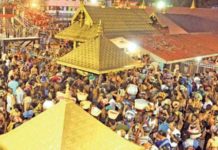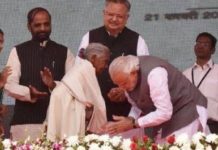Varun Baliga, a first year student of NALSAR, authored this article to give you a comprehensive understanding on all you need to know from the CLAT perspective. Additionally, here is his article on the happenings of ‘Koodankulam Nuclear Plant’.
“My friends and I have been coddled long enough by a billionaire-friendly Congress.” — Warren Buffet
“We are the 99%.” — Slogan of the Occupy Movement
The Occupy Movement is essentially a form of protest against social and economic inequality that commenced with the ‘Occupy Wall Street’ protest. This, now international protest movement began on September 17th, 2011 with protests in Zuccotti Park, New York City, against corporate greed on Wall Street. The movement was initiated by a Canadian group called Adbusters and inspired by a number of protest movements around the world like the Arab Spring. However, it can find direct inspiration in the 2011 Spanish Indignants Movement. The nascent movement in New York City sought to combine the Tahrir form of protest with the consensus decision making that the world witnessed in the Spanish movement. Their plan was “to flood lower Manhattan, set up tents, kitchens, peaceful barricades and Occupy Wall Street” and it was promoted with a poster featuring a dancer atop the iconic Charging Bull of Wall Street. The slogan of the movement was ‘We are the 99%’, revealing that the movement is about the rest of America that bore the brunt of the financial crisis while the bankers of Wall Street who arguably caused the crisis, got financial bailouts from Congress. It also refers to the concentration of wealth among the wealthiest 1% of America. Statistics from the Congressional Budget Office (CBO) reveal that between 1979 and 2007 the income of the wealthiest 1% of the USA grew by 275% while middle class Americans witnessed a mere 40% growth in their income. What’s more startling is that the average tax of the 400 wealthiest people of America fell by 37%. In 2007, CBO statistics showed that top 20% of the country owned 85% of the nation’s wealth.
Quite obviously, the movement was born from the anger the people of the USA felt with Wall Street and with the way their government has dealt with the corporate honchos that infest it. Keeping with the Tahrir tradition, protestors have been communicating with one another through the internet and social networking sites. The movement, both the first protest in Zuccotti Park and the ones it triggered world-wide, have shown great commitment to participatory democracy with consensus as the mode of decision making. Each Occupy movement is divided into working groups where the protestors have a say in every aspect of the movement. Important decisions are taken at the ‘General Assembly’, the main decision-making body of the movement, held every day. It is structured such that every person who wishes to contribute gets to.
The movement attracted a great deal of criticism for mainly two reasons-one, that the protest did not have a clear aim and two, that it did not have any leaders. The movement initially received flak, even scorn on occasion, from the media for not having any direction. While there may not be a clear set of demands, Naomi Wolf, an American author and political consultant, has articulated some of the protestor’s demands- tighter banking-industry regulations, a ban on high frequency trading, all those responsible for the Lehman Brother collapse and the financial meltdown that ensued arrested and an investigation by a Presidential Commission into corruption in politics. A Robin Hood style tax that targets the wealthy has also been discussed but nothing concrete has emerged from the movement. Many have argued that a lack of unified aims has prevented the movement from making any note-worthy impact on mainstream politics. The consensus form of decision making of the movement has also earned criticism for being the supposed cause for the lack of emergence of any aims or demands from the movement. The movement does not have a face. It lacks leaders but protestors argue that this doesn’t mean that the movement lacks leadership. Its emphasis on participatory democracy means that it shuns any form of hierarchical power structure. The movement has facilitators who conduct the General Assembly and provide the platform and opportunity for people to voice their opinions.
The Occupy Wall Street Movement spawned similar movements all over the world from London to Toronto, from Hong Kong to Auckland. As the movement got a response from the West and the East alike, authorities sat up and took attention. A number of arrests were made and Occupy protestors reported clashes with the police, arrests and indiscriminate use of pepper spray. After a number of concerns were raised about the behaviour of protestors in Zuccotti Park as well as the sanitary conditions at the site, police evicted the protestors on the night of November 14th. Similar eviction drives were carried out in a number of other cities like Oakland, Zurich and London. The Edinburgh City Council became the first governmental body to grant the Occupy movement official recognition, which it did on November 24th.
The movement has not evoked any major response from governments. Apart from attracting eyeballs for protesting at important locations, a lack of direction and leadership meant that determined action by the police left the protestors at sea. Today, with protestors evicted from the major Occupy sites in the world, the movement looks like it may die a slow death. However, one can never estimate the impact of people scorned by a financial crisis and an indifferent government.
Additional Reading
http://www.newyorker.com/reporting/2011/11/28/111128fa_fact_schwartz?currentPage=4 – Gives an account of the origins and future of OWS.
http://www.foreignpolicy.com/articles/2011/11/14/the_accidental_capitalists?page=0,0 – general analysis of the movement.
http://www.guardian.co.uk/commentisfree/cifamerica/2011/nov/25/shocking-truth-about-crackdown-occupy – Naomi Wolf’s account of police brutality at The Occupy protest in NYC.















Even if the government doesn’t lend it’s ears to these protests , the protest should go on.One day the Govt. will surely bow down.After all its all about finance(APNA SAPNA MONEY MONEY)
awesome…thanx… 🙂
I did not get it…. “The Edinburgh City Council became the first governmental body to grant the Occupy movement official recognition, which it did on November 24th.” – Official Recognition for what???
And What was the main reason for their protest? Not clear yet.
It officially recognized the protest by making a statement to the effect. The government allowed the protest. The main reason for the protest? Well that isn’t crystal clear as yet. The protest suffered from just that-a lack of clear purpose and direction. However, it can be said that the protest was an expression of the frustration the people felt with the ongoing financial crisis and the manner in which governments dealt with it-by doling out bailouts and not slapping charges or initiating proceedings against some greedy wall street execs who circumvented the law in some cases. Fiscal irresponsibility was rewarded with bailouts and not punished with jail sentences- that was the overwhelming perception.
Great article. Sums up everything.
The movement was lost from the start. The reason why their demands were not clear was because they did not have a leader incharge.
really nice article…… n the additional readings are really gud!!!
thanks.. 🙂
great article 🙂